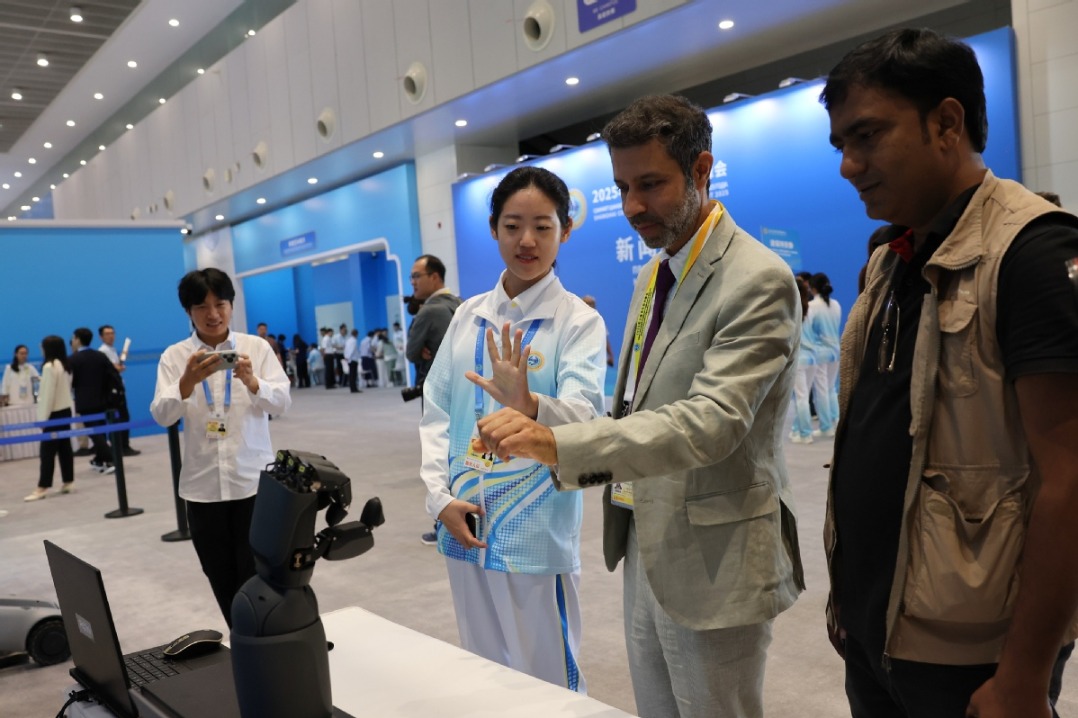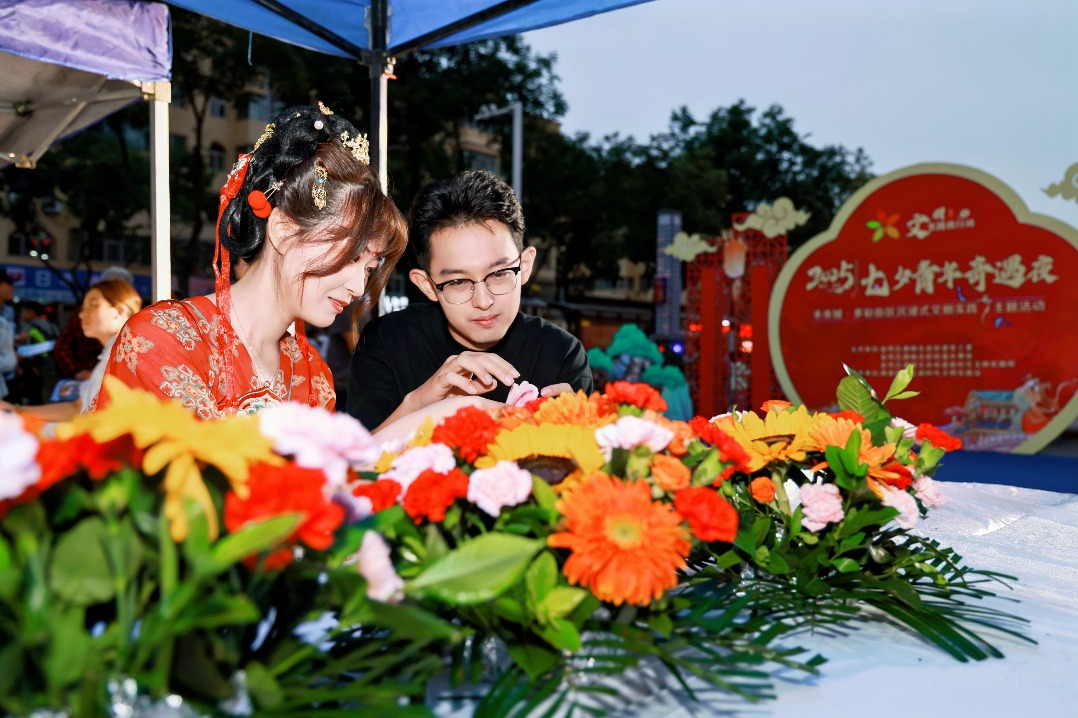Artist dedicated to glass craft future


For 56-year-old Zhang Chunlin, a happy life cannot be realized without two things-glass and grinding wheels.
Wearing a leather apron, Zhang held a glass disc in both hands and placed it against a rapidly spinning grinding wheel used for carving designs into glass. The glass artist carefully controlled the angle and strength with his hands. About an hour later, a vibrant peacock appeared on the glass.
Zhang's Tianjin workshop is full of glass carvings, etchings and painted artwork. On a large piece of glass measuring 1-meter long and 60-centimeters wide, a carved lion "moves" its mane in the wind. The delicate artwork often draws admiring visitors.
"You cannot feel the traces of engravings when you touch the glass on the front side, as the image and characters are carved on the reverse side," said Zhang, adding that the back side would be coated with a layer of aluminum or silver as a mirror.
Zhang has been enthralled with glass art since he was a child. "My father was a local folk artist in glass carvings, and he often made exquisite glass works in our old shabby house," he said.
In 1979, Zhang worked as a glass carver in a mirror making factory. Before he finished his first glass carving, Zhang broke many pieces of glass.
As the edges of ground glass could be as sharp as blades, his hands were often injured. When this happened, Zhang would just grab a band-aid and continue to work.
Though the work is seemingly tedious and demanding, Zhang said he is satisfied and happy to dedicate himself to glass carvings.
In order to elevate their artistry, Zhang and his colleagues created many new grinding wheels of different shapes and sizes.
"From normal round grinding wheels to cam and triangular ones, we have made many improvements. These grinders are like paint brushes, which can create different patterns with various textures on the glass," he said.
In its heyday, nearly every family in China bought carved, etched or painted glass. They were used as decorative pieces on furniture such as wardrobes and wine cabinets, and were regarded as popular gifts for weddings and birthday parties. However, it has gradually lost its appeal in modern times.
Zhang sees these challenges and tries to keep glass art alive through various means.
Feathers are a common element in glass carvings of auspicious bird images like the red-crowned crane, which is traditionally considered a symbol of longevity.
Craftsmen need to grind many times to show the texture in the crane's feathers, so Zhang enhanced a grinding wheel to produce bird feathers in an easier and more vivid way.
With Zhang's efforts, glass carving was listed as one of Tianjin's intangible cultural heritages in 2017. In the same year, Zhang founded his own studio so as to pass down the glass carving art to younger generations.
However, young people still find the art daunting. To attract more people to love glass carvings, Zhang strives to lighten the art's image by integrating glass carving elements into household items that are used daily. These include goblets, tea sets and jewelry boxes.
"My father has not given up glass art even in his 90s," Zhang said. "It is his dream, and now it is mine."
Xinhua
- Global allies' contributions to China's resistance recognized at symposium
- Egyptians laud TCM veterinary summer program
- New war memorials honor sacrifices home, abroad
- Closer ties highlighted for regional energy security
- Xinjiang's cotton irrigation technologies contribute to Central Asia's sustainable development
- Greater collaboration in AI high on agenda





































